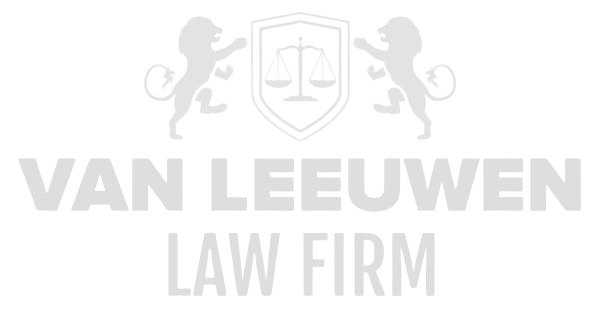Data governance forms the framework within which organizations systematically oversee the availability, usability, integrity, and security of data. By establishing policies, processes, standards, and performance indicators, a unified approach is created to manage data as a strategic asset. Roles such as data stewards and data custodians ensure that data quality is continuously monitored, while governance committees are responsible for establishing and evaluating policies. In addition to technical components, such as metadata repositories and automated quality scans, a solid governance program also requires organizational embedding, training initiatives, and anchoring mechanisms within the decision-making structure of boards and advisory councils.
Effective data governance enables management measures to mitigate risks such as data loss, inconsistencies, or misuse, while insights into data-driven KPIs and reports support decision-making at all levels of the organization. By combining data lifecycle management with privacy frameworks and security protocols, not only is a reliable data architecture established, but compliance requirements such as GDPR, industry-specific regulations, and international sanction regimes are also met. In cases where accusations of financial mismanagement or corruption arise, an incomplete or inefficient governance record can directly lead to the disruption of operational processes and severe reputational damage.
(a) Regulatory Challenges
The interpretation of laws and regulations around data governance requires insight into various frameworks, ranging from privacy regulations such as GDPR to sectoral standards for financial services or healthcare. Each legal domain has its own definitions for personal data, special categories of data, and retention periods, which must be translated into organization-wide applicable policies. Legal scrutiny of data flows and international transfers is a complex exercise, where model contract clauses, binding corporate rules, and approvals from regulators must align precisely.
Accountability requires that all processing activities are recorded in a processing activities register (RPA) and that these can be verified by regulators. This register must be kept up to date, with any changes in data processing — such as the addition of new systems or changes in data types — processed in a timely manner. Insufficient administrative safeguards can result in fines of up to 4% of global turnover, especially when regulators find that individuals’ rights have not been adequately safeguarded.
Internal oversight by Data Protection Officers (DPOs) must be supplemented with external audit processes to ensure independence. DPOs navigate tensions between legal obligations, IT administrators, and business units and must have escalation paths that guarantee reporting lines to executive levels. Without clear mandates, compliance can vary greatly between departments, leading to fragmented adherence and differing risk profiles.
Alignment with other regulatory regimes, such as the Sarbanes–Oxley Act (SOX) for financial reporting or sector-specific cybersecurity guidelines, requires that data governance is not implemented in isolation. Cross-functional alignment ensures that data quality and security measures do not undermine each other. The absence of this integration increases the risk of overlapping or conflicting audits, resulting in costly re-inspections.
Governance frameworks must be scalable to accommodate future changes in regulations, including upcoming EU regulations for AI, digital identification, and supply chain due diligence. Anticipating changes in compliance landscapes minimizes reactive adjustments and ensures that risky situations are recognized and mitigated in a timely manner.
(b) Operational Challenges
Setting up automated data quality controls requires the design and maintenance of scorecards, data validation rules, and exception handling. Validation rules must be programmed into ETL processes, with calls to external sources, bulk transformations, and user-interface input regularly complying with reviewed business rules. Without robust exception workflows, quality issues go unnoticed, leading to downstream data corruption and unreliable reporting.
Managing metadata and data lineage is crucial for traceability of every data transformation. Metadata repositories must serve as the single source of truth, enabling users to understand the origin, ownership, and use cases of datasets. Continuously maintaining these repositories requires collaboration between data engineering, business analysts, and security teams, with tool synchronization and governance agreements ensuring consistent sources.
Access and permission management at the dataset level becomes an operational bottleneck if not automated. Role-based access controls must guarantee fine-grained permissions, while privileged accounts with escalation mechanisms and alerting should be provided with additional monitoring layers. Manual provisioning of rights leads to delays and security gaps, especially in environments with high staff mobility.
Maintaining data retention policies and lifecycle workflows requires that data is automatically archived, migrated, or deleted when retention periods expire. Integration with backup systems and archiving tools must guarantee error-free deletion without data loss for research purposes. The lack of reliable retention processes results in storage bloat, inefficiency, and compliance violations when data is retained longer than allowed.
Anchoring measures such as change management, incident response, and business continuity planning require coordinated documentation and scenario exercises. Data governance touches configuration management of databases, middleware, and analytics platforms. Without a fully rolled-out change approval board, changes can lead to downtime, data corruption, or inaccessible data environments.
(c) Analytical Challenges
Extracting insights from large, heterogeneous datasets requires advanced analytical pipelines. Data scientists need to be able to utilize self-service analytics without uncontrolled export of sensitive data. This necessitates the implementation of secure sandboxes and virtual data rooms, where anonymized subsets are accessible for exploratory analysis.
Integrating privacy-enhancing technologies such as differential privacy and federated learning requires that analytical frameworks are equipped with cryptographic modules and split learning architectures. Data scientists must have access to well-documented APIs that allow for privacy-protected analyses to be performed, without exposing the original dataset. The development of such tools requires multidisciplinary expertise and continuous upskilling.
Monitoring analytical bias and model fairness adds an extra layer to data governance. Validation steps should check for underrepresentation of subpopulations and disproportionate error rates. Governance committees must perform periodic fairness audits and set up corrective mechanisms when algorithms show deviations. This process requires extensive logging of model parameters and test datasets.
The operationalization of real-time analytics for monitoring key risk indicators implies that streaming platforms and complex event processing engines (CEP) must be set up with privacy-configured microdata. Data streams should be prioritized and filtered based on data governance rules so that only permitted events are forwarded for analysis and incident detection.
Auditing analytics workflows requires end-to-end traceability: from source to visualization and reporting. Automated lineage tracking and governance dashboards provide insight into who performed which analyses, what data was used, and what results were published. Such tools form the backbone for continuous improvement and compliance accountability.
(d) Strategic Challenges
Integrating data governance into business strategy requires recognizing data management as a strategic pillar alongside finance and operations. KPIs such as data quality score, time to insight, and compliance status should be included in quarterly reports to stakeholders. This ensures that governance is not just operational but is part of organizational goals.
Long-term planning for data platforms demands investments in future-proof architectures, including data mesh or data fabric frameworks. By implementing distributed governance principles, different business units can manage their own domains while ensuring central compliance and security guidelines remain intact. This hybrid approach requires strategic decision-making regarding tool ecosystems and organizational change management.
Collaboration with external ecosystems – such as industry cooperatives, standards organizations, and regulatory forums – supports the uniformity and scalability of governance initiatives. Participation in public-private partnerships enables organizations to share best practices, leverage collective threat intelligence, and develop joint compliance solutions for sanction and regulatory risks.
A culture of data-driven innovation requires governance programs that do not stifle innovation but catalyze it. Sandbox environments for proof-of-concepts, with temporarily relaxed governance rules and strict time-to-live policies, allow teams to design new data-driven products without compliance barriers. After validation, governance checkpoints ensure that successful concepts are scalable and compliant when rolled out.
Continuous evaluation of governance maturity through models such as DAMA DMBOK or CMMI Data Management Maturity provides objective benchmarking. Strategic roadmap planning with feedback loops from maturity assessments allows governance initiatives to evolve in line with technological, regulatory, and market developments.









